June 18, 2009
From the producer: June 18, 2009
We may be annoyed about the heat and low rainfall (last week’s precious event dried up so quickly, and today’s was just mosquito fuel), but the wildlife is frantic. Somebody chewed up our birdbath fountain tube.
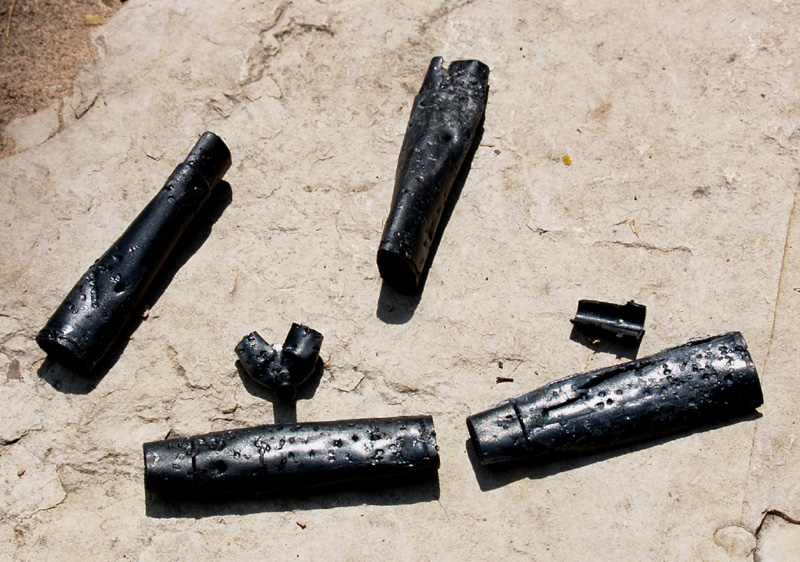
We had a spare, and like stupid-bears, put it on, only to have it eaten the next night. Don’t know who, or why they would chomp it, but they did. Must have been a teething raccoon.
Once again, the shed came to the rescue. I brought out the copper tubing left over from the lettuce bed hoops. It’s a little large to fit securely on the pump, but Greg got out the glue gun, and bingo! He clamped the top to create a small fountain. That wasn’t enough for me, so he tweaked it with a screwdriver to get enough water to see and hear even from the patio. So far, so good.
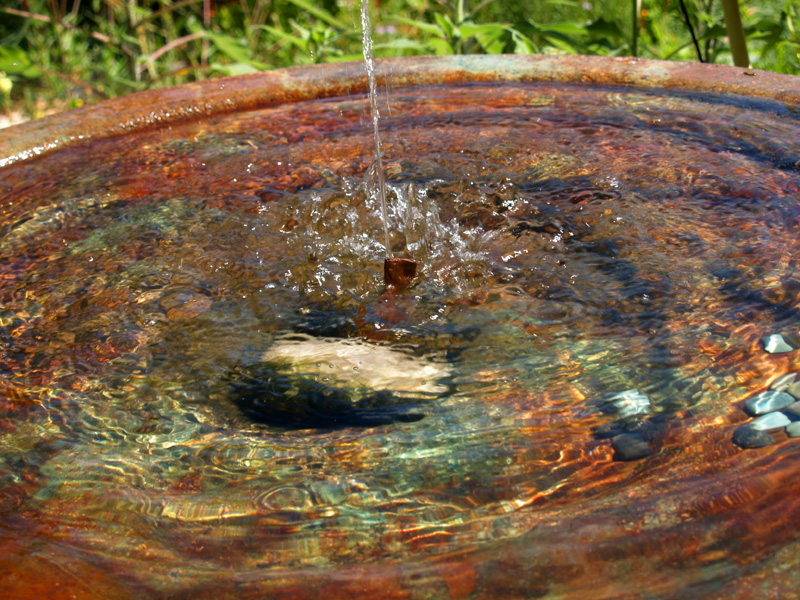
These days I don’t get too emotional over animals/birds/insects eating or destroying our stuff. When it’s over 100º for days, and they can’t hit the store or farmers’ markets or turn on the faucet, I figure we can give back a little. It adds to our challenge, that’s for sure. But we’re sharing the real estate with them, and as partners in the big scheme of it all, must acknowledge life in all its forms. Good and bad and ugly. That is not to say I don’t take protective measures or squish things or douse with them with water. Or yell at them. But I left this bad guy alone since he let me take his picture.
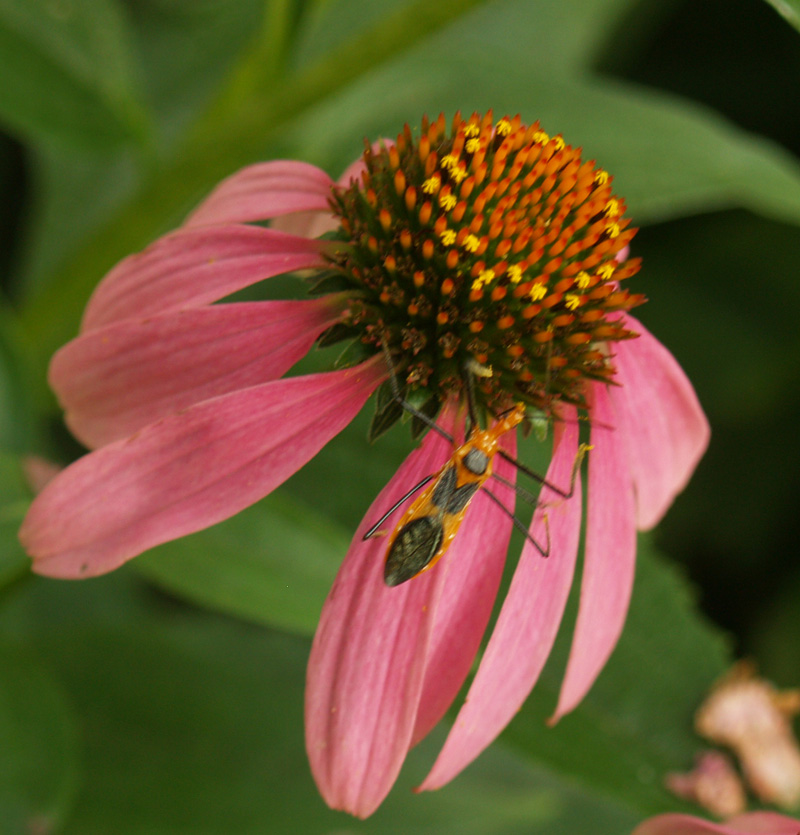
To counterpoint, here’s a good guy, a Gulf fritillary, at the patio zinnia. The hummingbirds have sucked on them, too.
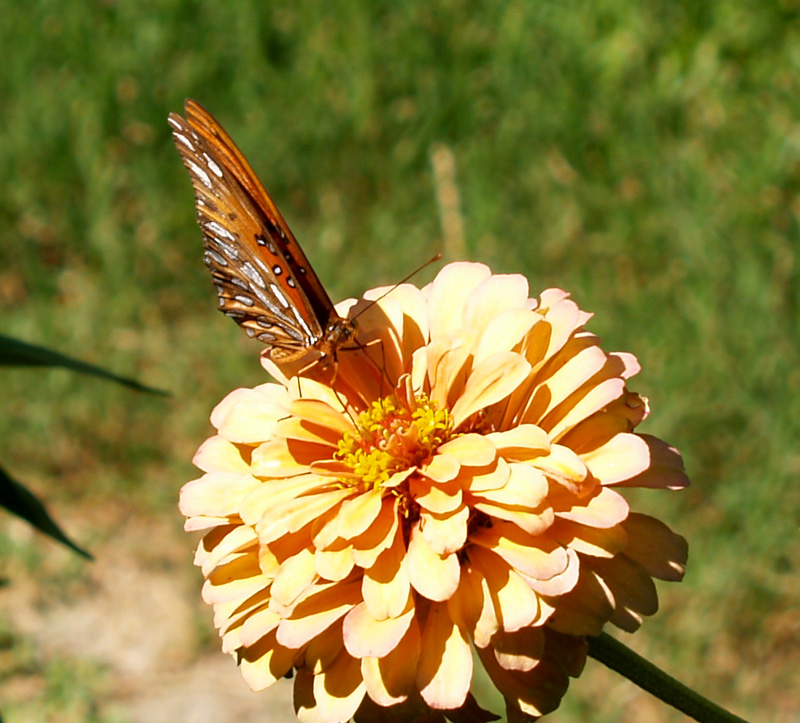
All over the garden, butterflies, a few bees, and hummingbirds are busy with many plants, including flame acanthus, lantana, Dicliptera suberecta, salvias, rock rose, and turks cap. To extend the welcome carpet for the hummingbirds, I set up the feeder on the patio. 1 part sugar to four parts of water, heated in the microwave. Replace it every few days and clean the feeder.
Trees have taken a hit in drought, too. Deep watering is essential. Many times, though, the problem started at planting time. On CTG this week, Tom meets with certified arborist Guy LeBlanc from Arbor Vitae Tree Care about the most common reasons that trees appear to suddenly up and die.
If you’re thinking about adding a tree, don’t do it until you see this! (On YouTube if you miss the broadcast.) If you have a tree that’s withering right before your eyes, this might explain what’s wrong. But if you have a valued tree with serious problems, I highly recommend consulting a certified arborist. I did it a few years ago, and it was valuable education, especially when the guy practically pulled up the tree with his hands. Its demise after 7 years was due to the situation that Guy illustrates this week.
Like with any living thing in our gardens, it all starts with site selection, plant selection, and proper planting. One of the most common problems I’ve heard from fellow gardeners results from planting shady plants in sun and sun lovers in too much shade.
Yes, you say, that seems SO obvious, but plant tags can be confusing, especially when you’re new at this. And sun/partial shade/part sun is not very clear. Or, we don’t realize that a shaft of sun hits our shade lover for 15 minutes at 4 p.m., just enough to do it in.
That happened to me with my firespike (Odentonema stricta). I knew it didn’t want any sun, but I really thought it was in shady land. However, it got just enough drift of sun through the trees to wilt it on impact. I moved it to the patio cove where filtered morning sun touches it ever so briefly. It hasn’t bloomed yet, but it’s nicely filling out with its neighboring gingers. I will say that this guy is not xeric. Our relationship may not be permanent if rain doesn’t come.
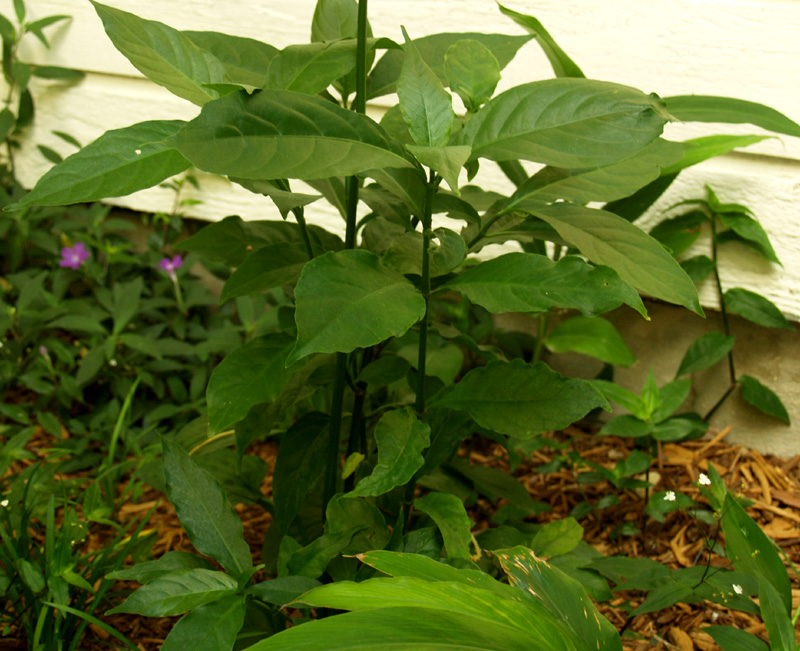
When I moved it from the rental side bed, I planted an abutilon to fill its place, because I thought, aha, there’s a bit of sun there. So sorry, not enough sun. Too shady, too dense a soil, too everything wrong. Croaked plant before I could save it.
Or we stretch our hopes, and just maybe, maybe, our 5-6 hours of sun really is enough for the plants that want full sun. But it depends on which 5-6, and is it really that much?
Morning sun and afternoon sun are two different ballgames in Central Texas. My newly planted bicolor sages (Salvia sinaloensis) in the crape bed get morning shade and afternoon sun. They don’t look thrilled. Conversely, the ones that get morning sun and afternoon shade look great. However, the crape ones are new and getting their feet in, so this is not a fair test. I’ll know better by fall and give you a report.
Constantly, I hear from viewers that their esperanzas (Tecoma stans) don’t bloom. Ditto mine. They want as much sun as they can get, and the hotter the better. Every year, I admire this display in my neighborhood. These plants get scalding sun and reflected heat many hours of the day. I love the glass mulch underneath.
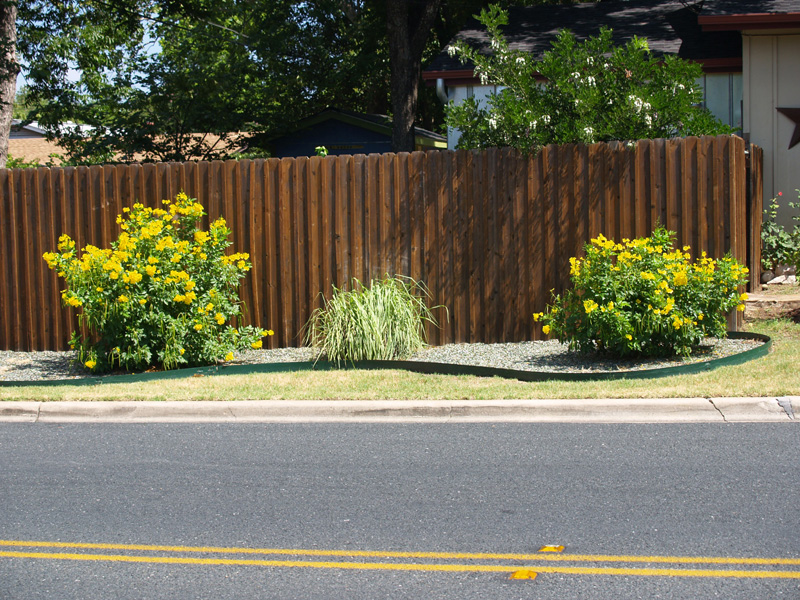
I’m glad I took a chance and moved the withering. almost leafless Valentine rose a few weeks ago from its too-shady spot to a sunnier place in a patio pot. Look at it now! Even the mint I plucked out of the pot and replanted is thriving.
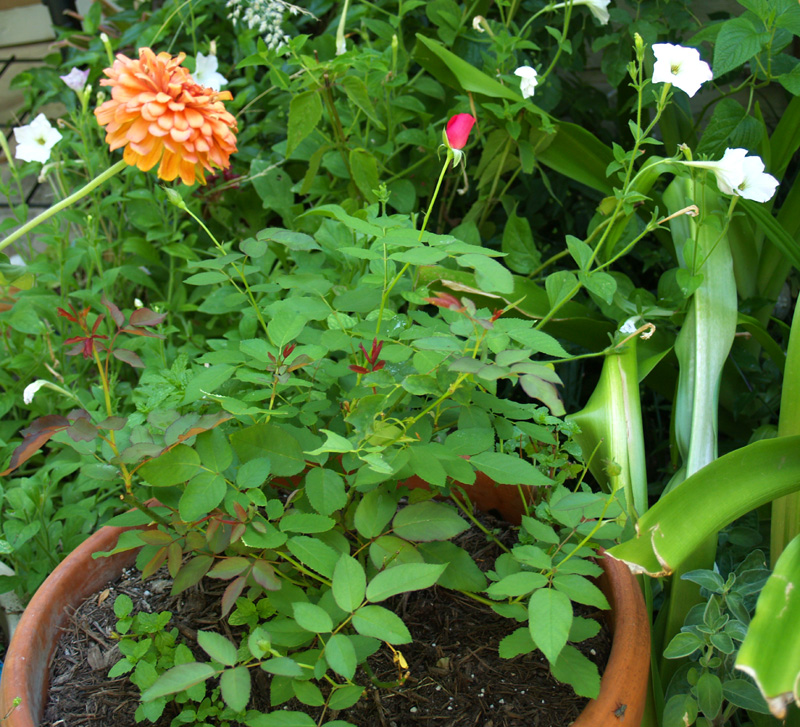
I figured that saving this one cancels some of my guilt over last year’s abutilon murder.
I get points, too, for saving the Iceberg and Mrs. Oakley Fisher roses. In their sunnier spots in former photinia-ville, they keep sending thank you cards.
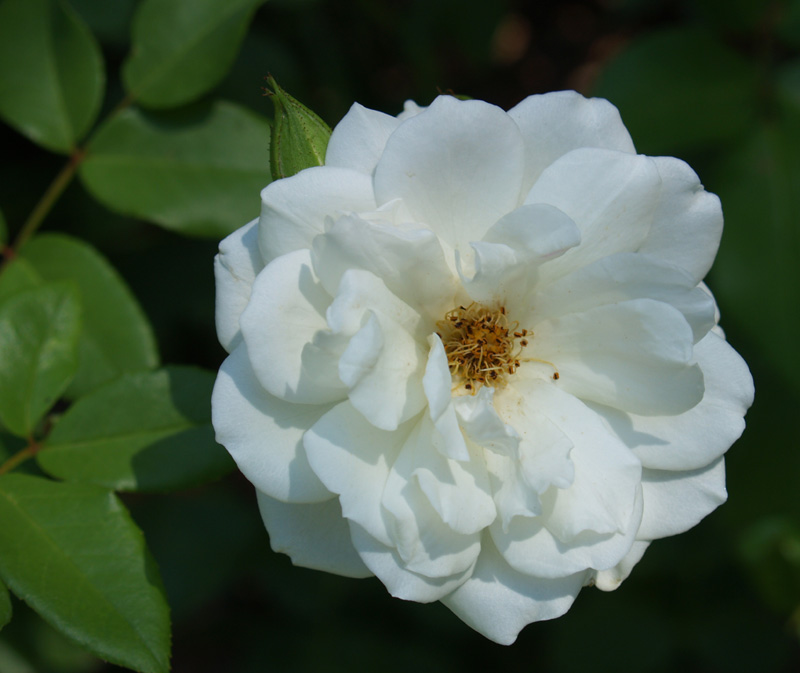
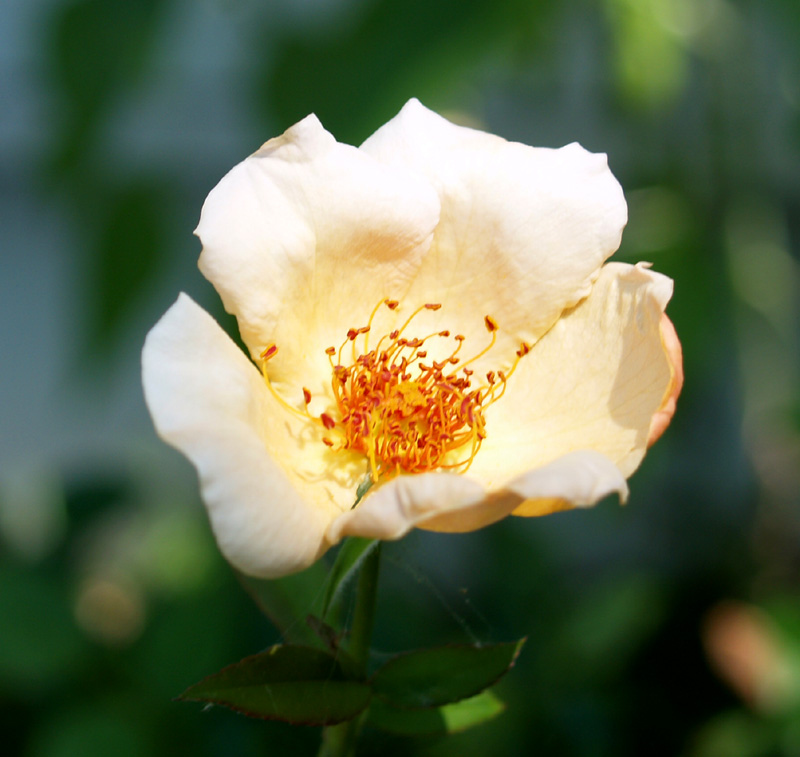
In the cat cove, I watched and waited for this moment: my new plumeria and old-time daylily blooming side by side. Sometimes things work out just right.
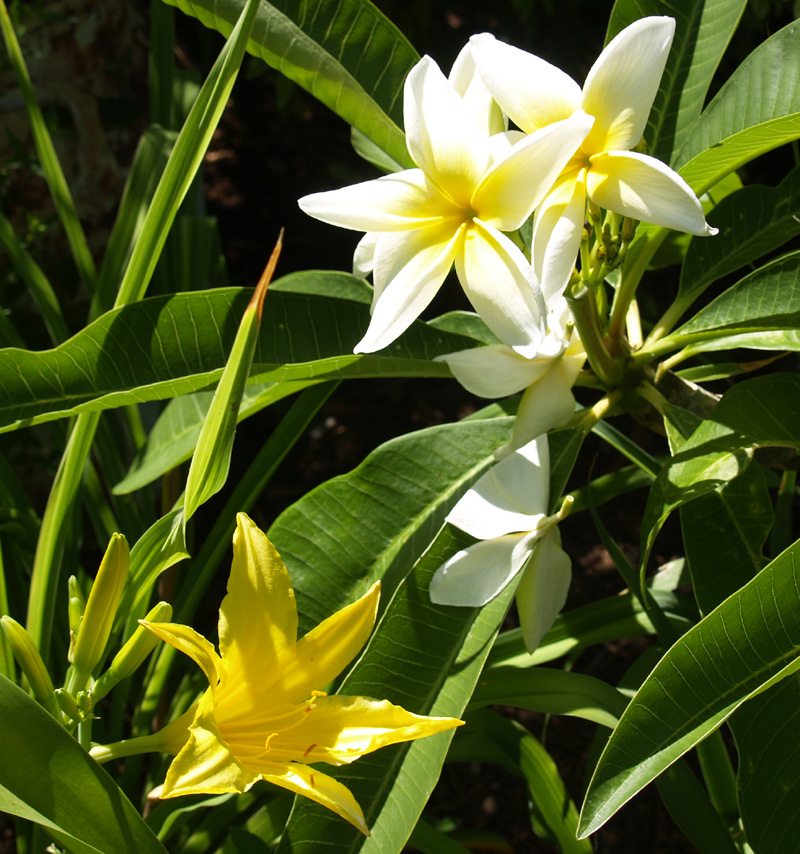
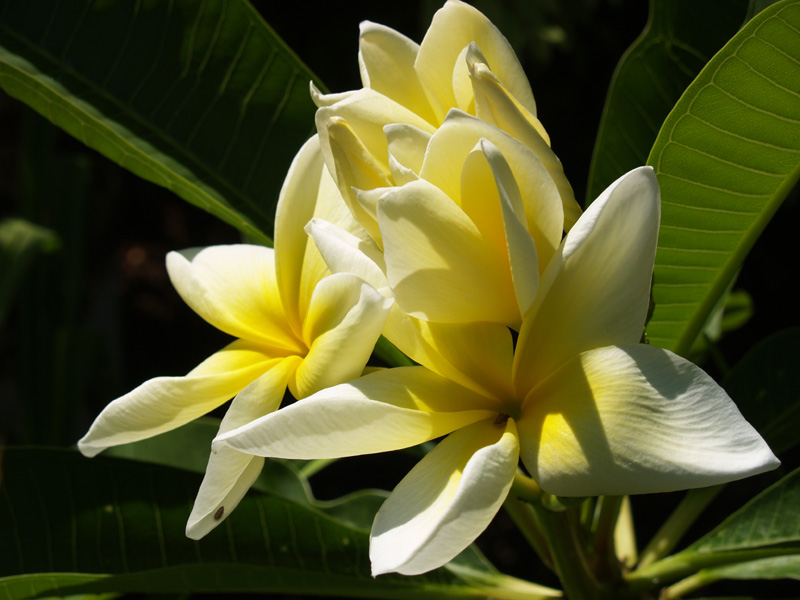
Until next week, Linda
tags:







